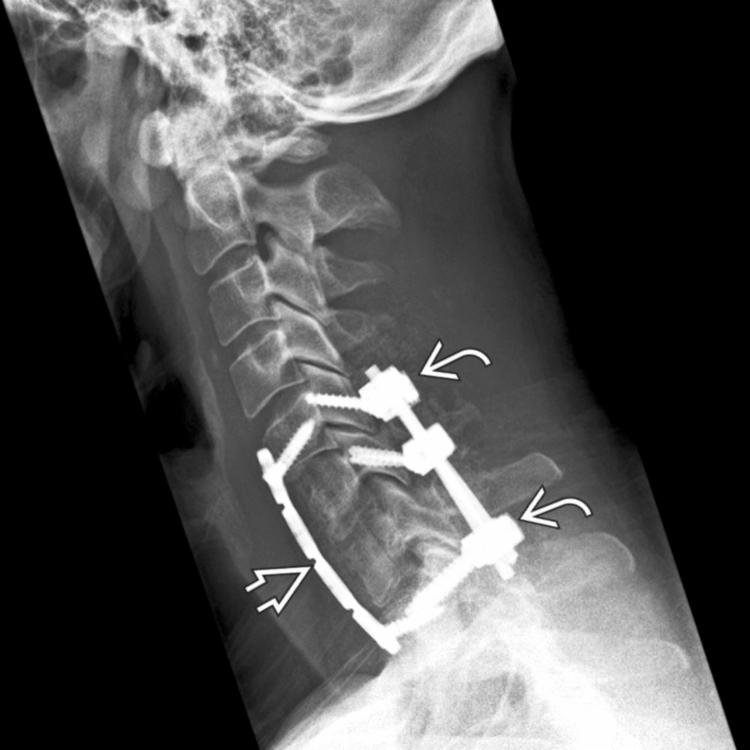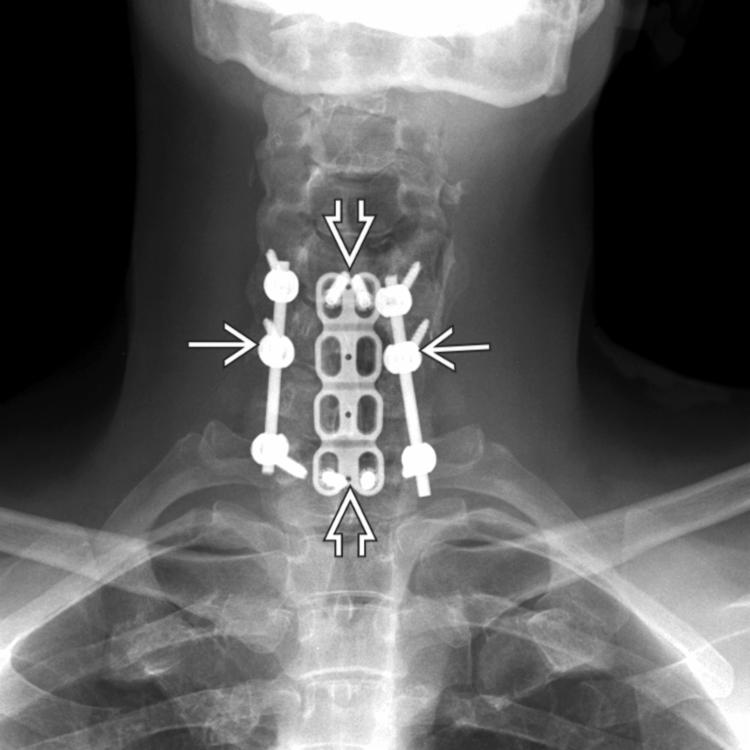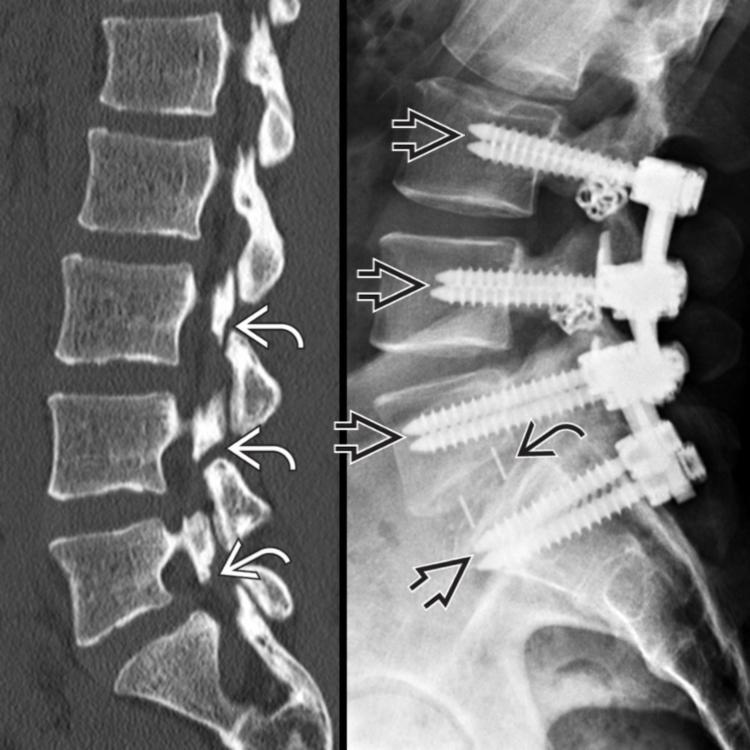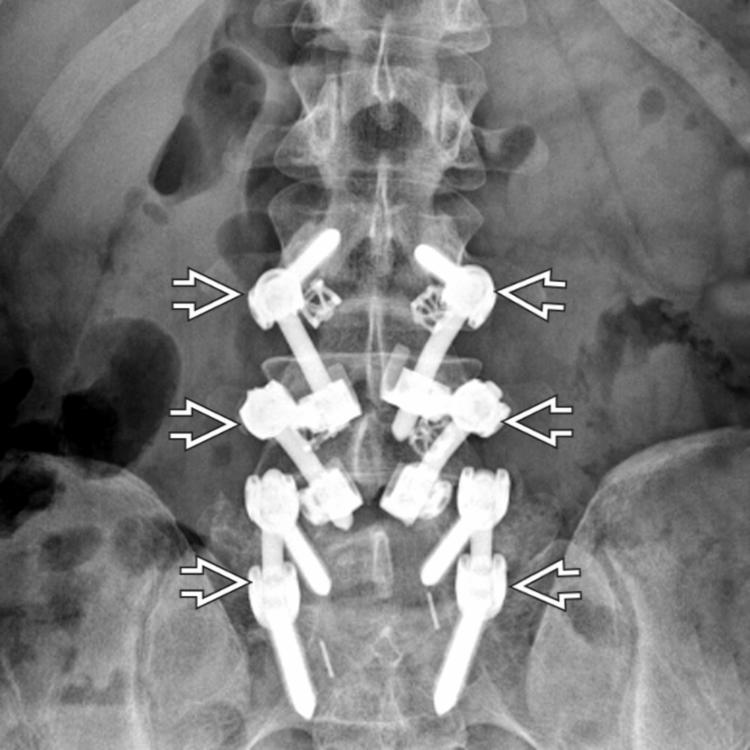Physical Address
304 North Cardinal St.
Dorchester Center, MA 02124
Instrumentation in fusion surgery designed to stabilize, not replace, spinal bony elements
Postoperative imaging: Assess progress of osseous fusion, confirm correct positioning & integrity of instrumentation, detect suspected complications (e.g., infection or hematoma), & detect new disease or disease progression
Radiographs
Noninvasive, most common for assessment of fusion
Instrumentation break or periimplant lucency
CT
Modality of choice for imaging bony detail to enable accurate assessment of degree of osseous fusion
MR
Useful for detecting and monitoring infection or postoperative collections
Complications
Pseudoarthrosis, instrumentation fractures
Surgical approach risks: Nerve or vascular injury, dural tear
Infection
Instrumentation malposition
Compare current radiographs with multiple previous studies
Identify subtle progressive changes in spinal alignment & in position of instrumentation devices that may signify imminent failure of device or other complications




Become a Clinical Tree membership for Full access and enjoy Unlimited articles
If you are a member. Log in here